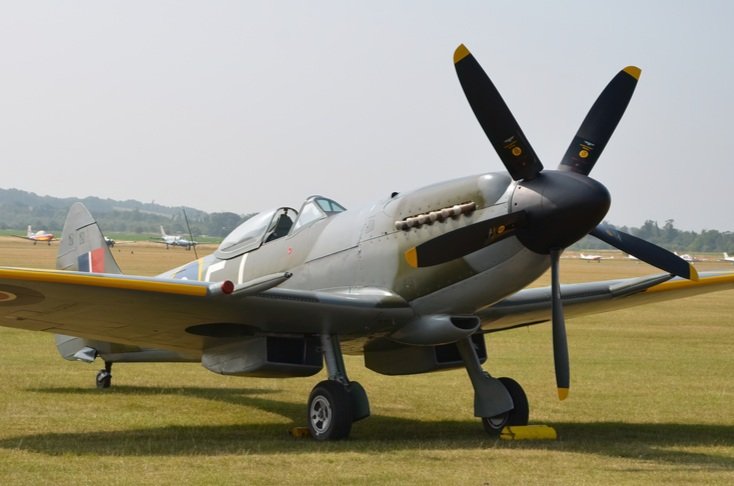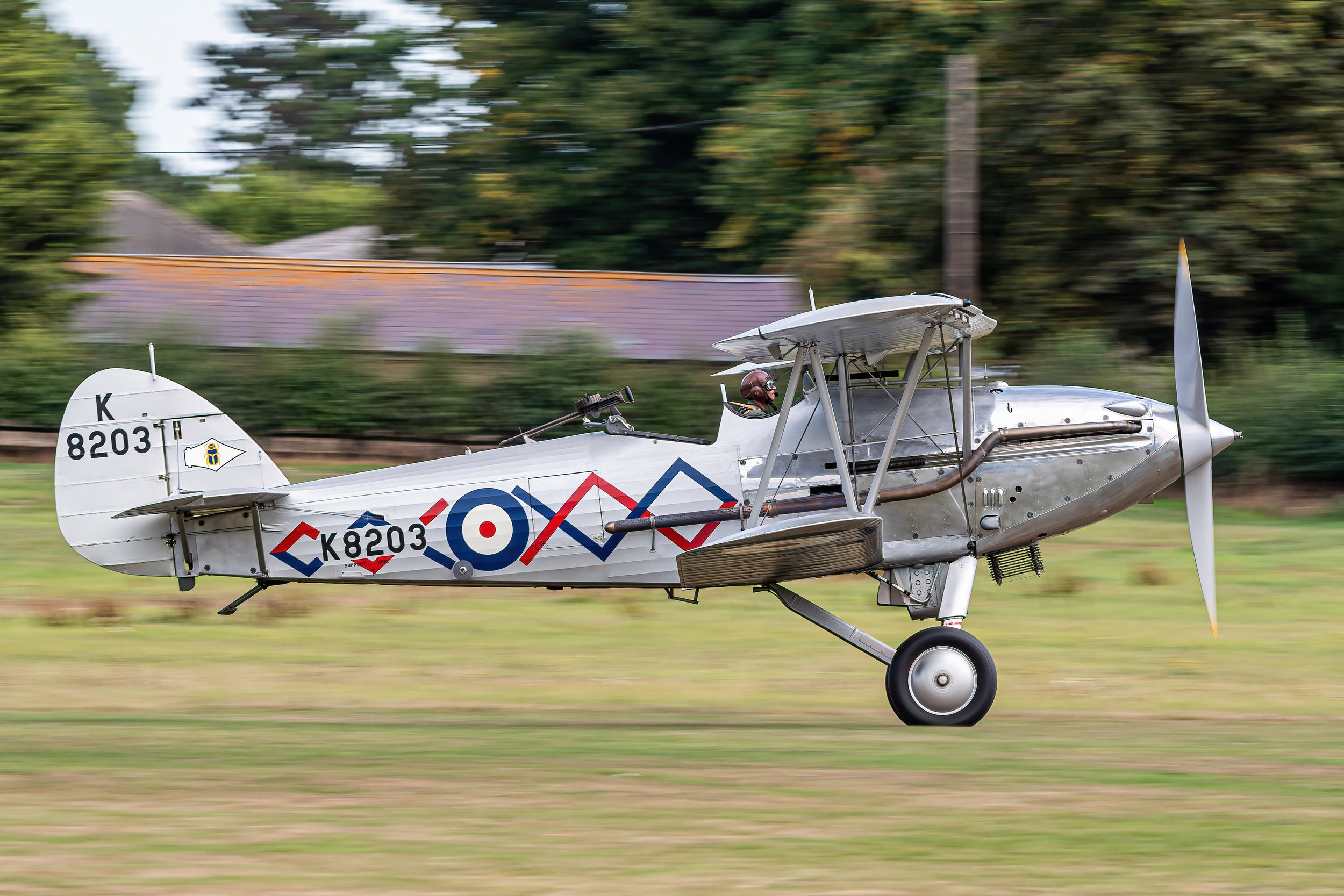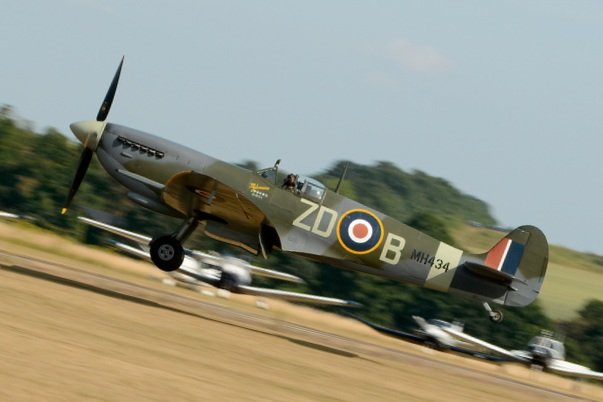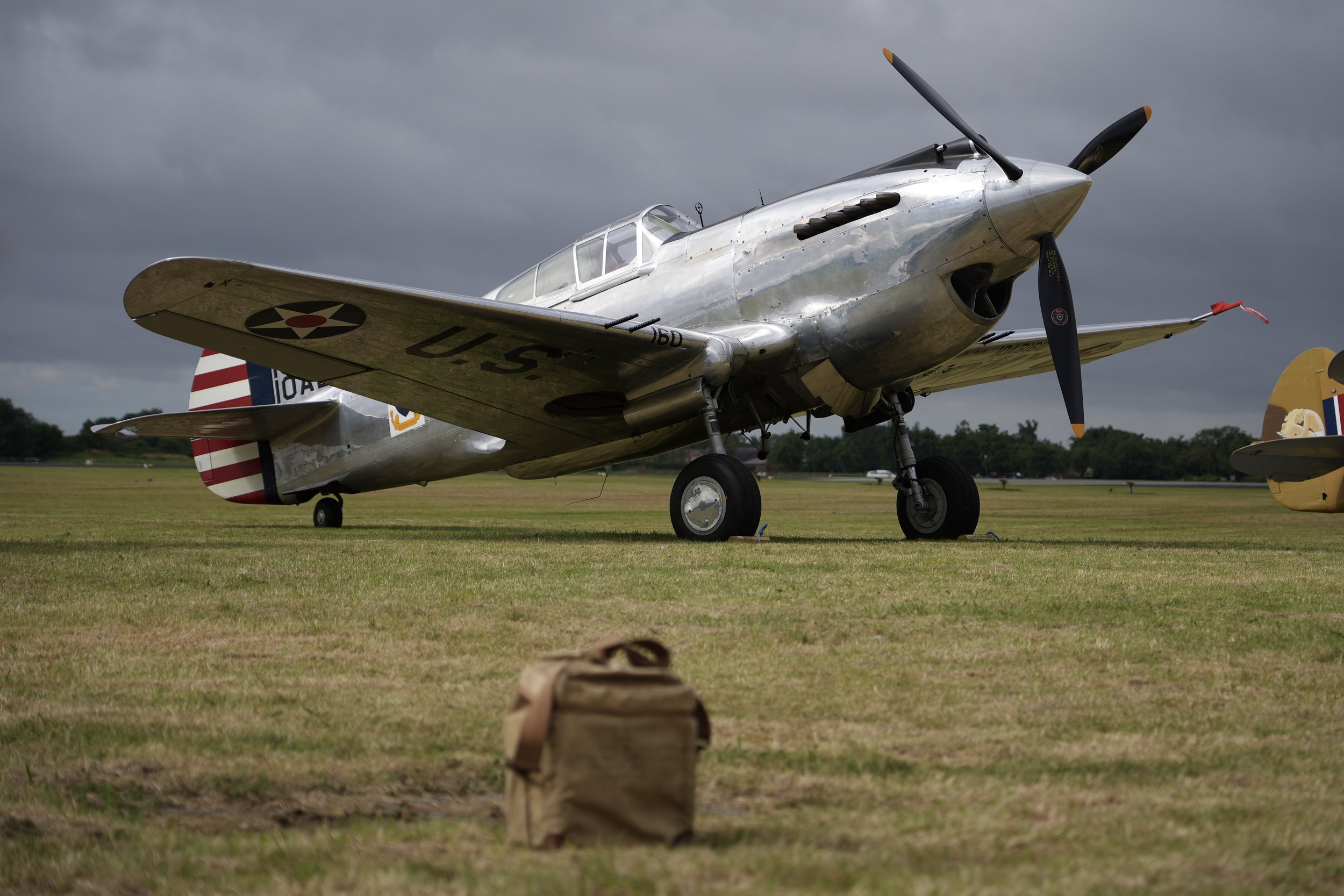Spitfire G-IBSY
Year built
1942
Aircraft
Spitfire Mk Vc
Base
Sywell Aerodrome
On 11th September 1942 Spitfire Mk.Vc EE602 was built by Westland in Yeovil, Somerset under contract number B124305/40. When built, EE602 was fitted with the universal ‘C’ wing configuration. This allowed it to be fitted either with 8 machine guns, 4 20mm canons or a mix of 4 .303 machine guns and two 20mm canons. This aircraft had a mix of machine guns and cannons. It was fitted with a Rolls Royce Merlin 46 engine. This produced 1,415 bhp at 3,000 rpm and +16 ib/sq. in. boost at 14.000 ft.
EE602 started out with 66 Squadron. 66 was the second Spitfire Squadron to come into existence and fought in the Battle of Britain. She then went to 129 Squadron, in recognition of the large sums of money the Indian Government raised through the sale of War Bonds some squadrons were named after Indian provinces and 129 was named ‘Mysore’ Squadron. Its final squadron was 453 Squadron (RAAF).
EE602 completed over 100 Missions including escorting the Flying Fortress ‘Memphis Belle’ back to the English coast after her now famous 25th Mission with 129 sqn until she was damaged in a taxing incident and taken off charge.
Individuals, companies, clubs, or counties could buy their own Spitfire.’ They had to collect £5,000 for their donation. One such company was the Uruguayan railways. Run at the time by British expats. You will see on EE602’s side ‘Central Railways Uruguayan Staff.’ She was formally ‘presented’ to 129 Squadron on 31st May 1943.
After a painstaking restoration to concourse standard lasting more than three years, EE602 now flies again in the markings it wore while serving with 129.
| Back to Top |
Supermarine Spitfire Mk Vc
The Supermarine Spitfire is a British single-seat fighter aircraft that was used by the Royal Air Force and other Allied countries before, during, and after World War II. Many variants of the Spitfire were built, using several wing configurations, and it was produced in greater numbers than any other British aircraft. It was also the only British fighter produced continuously throughout the war. The Spitfire continues to be popular among enthusiasts; nearly 60 remain airworthy, and many more are static exhibits in aviation museums throughout the world.
The Spitfire was designed as a short-range, high-performance interceptor aircraft by R. J. Mitchell, chief designer at Supermarine Aviation Works, which operated as a subsidiary of Vickers-Armstrong from 1928. Mitchell pushed the Spitfire's distinctive elliptical wing with cutting-edge sunken rivets (designed by Beverley Shenstone) to have the thinnest possible cross-section, helping give the aircraft a higher top speed than several contemporary fighters, including the Hawker Hurricane. Mitchell continued to refine the design until his death in 1937, whereupon his colleague Joseph Smith took over as chief designer, overseeing the Spitfire's development throughout its multitude of variants.
During the Battle of Britain, from July to October 1940, the public perceived the Spitfire to be the main RAF fighter, though the more numerous Hurricane shouldered a greater proportion of the burden against Nazi Germany's air force, the Luftwaffe. However, Spitfire units had a lower attrition rate and a higher victory-to-loss ratio than those flying Hurricanes because of Spitfire's higher performance. During the battle, Spitfires were generally tasked with engaging Luftwaffe fighters—mainly Messerschmitt Bf 109E-series aircraft, which were a close match for them.
After the Battle of Britain, the Spitfire superseded the Hurricane to become the backbone of RAF Fighter Command, and saw action in the European, Mediterranean, Pacific, and South-East Asian theatres. Much loved by its pilots, the Spitfire served in several roles, including interceptor, photo-reconnaissance, fighter-bomber, and trainer, and it continued to serve in these roles until the 1950s. The Seafire was a carrier-based adaptation of the Spitfire that served in the Fleet Air Arm from 1942 through to the mid-1950s. Although the original airframe was designed to be powered by a Rolls-Royce Merlin engine producing 1,030 hp (768 kW), it was strong enough and adaptable enough to use increasingly powerful Merlins and, in later marks, Rolls-Royce Griffon engines producing up to 2,340 hp (1,745 kW). As a result, the Spitfire's performance and capabilities improved over the course of its service life.
The Spitfire MkV was one of the most successful ‘stop-gaps’ ever introduced into Royal Air Force Service. Over one hundred and forty RAF squadrons operated the type. It served on all battlefronts and was supplied to nine other countries including the Soviet Union and the United States.
During 1940 the Spitfire MkI and MkII barely maintained superiority over the Messerschmitt Bf109E so the Air Staff turned their attention to the question of a replacement. Their preferred successor was the MkIII, fitted with a Merlin XX engine and incorporating a new wing design.
Realising it would take time to tool up for a new production aircraft and because of problems with the Merlin XX, the Air Ministry asked Rolls-Royce, as an interim measure, to install the Merlin 45 engine in the Spitfire MkI airframe. Between 1941 and 1943 over 6500 of this MkV version were produced. The spitfire MkIII never did go into production but some of the new design features intended for it were incorporated into the MkV
By 1944 only five squadrons remained in service. Even so, two Spitfire MkV squadrons provided gunfire direction on 6 June 1944 for naval units off the D-Day beached of Normandy.
| Back to Top |
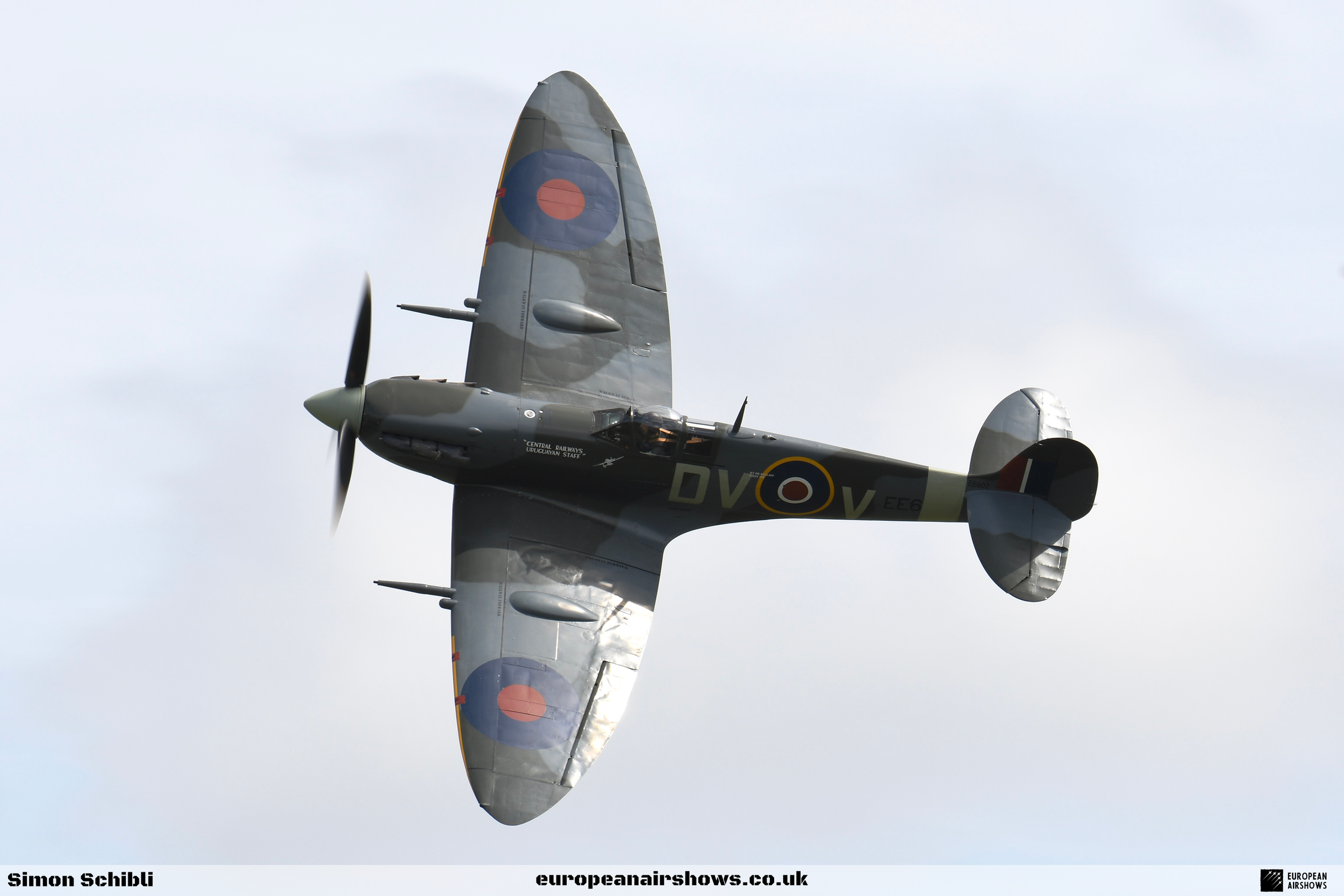
| Back to Top |






















